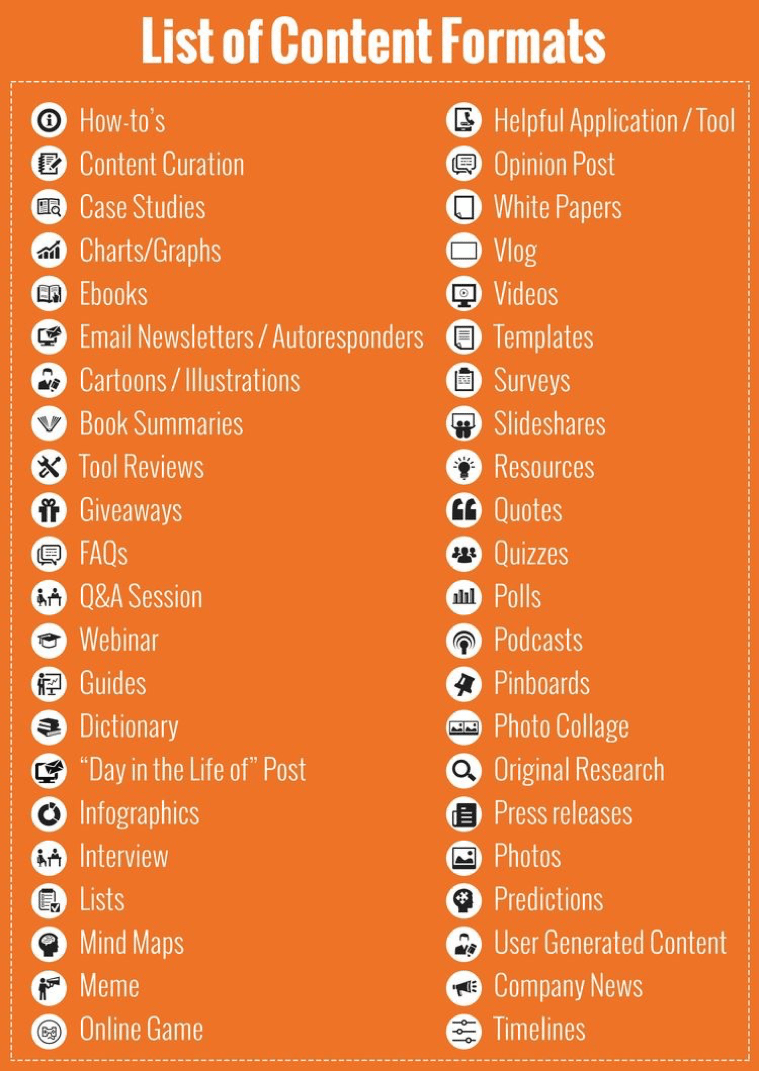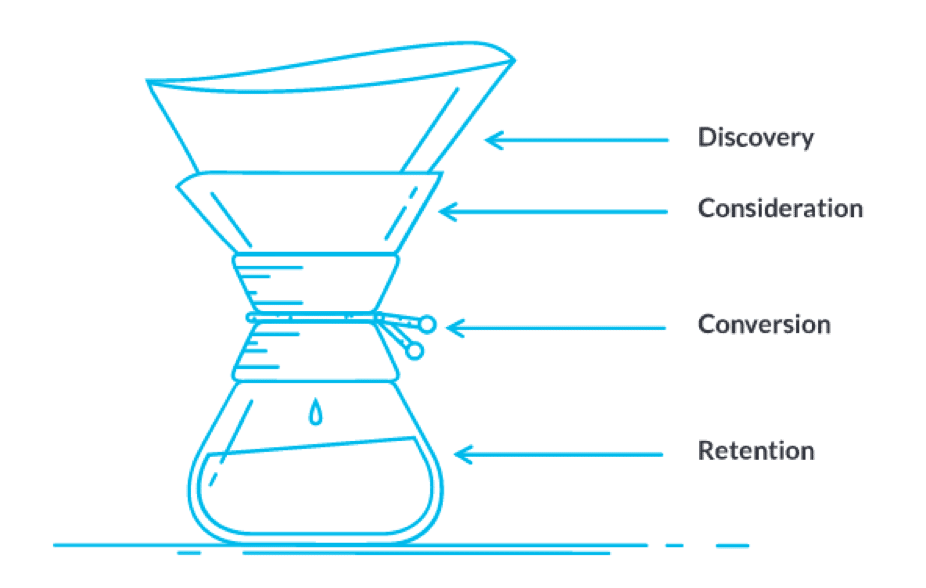Content marketing is at the heart of building trust, credibility and authority within your niche. The key to successfully tying in your content marketing efforts with business objectives and a measurable ROI comes down to more than just developing the content itself.
Whether you run a small business or run the marketing department within a startup, here are 5 reasons why your content marketing sucks and how you can make changes today…
1) You don’t have a clear content strategy
Many companies I work with and reach out to have a major gap in how they are implementing their content efforts such that a strategy is incomplete or clearly missing.
Let’s be clear on the difference of what a content strategy is versus content marketing. Content strategy is focused on mapping out a roadmap as to how you will attract, engage and convert/target existing customers. Your strategy should specifically highlight how many customers/leads you will attain, by when and by how much. For example, our content will aim to contribute 75% to customer retention, while generating 80% of inbound leads by Q2 2017.
Content marketing entails the actual execution of your content assets. This is where you should outline the tactics that will be used to foster your strategy. For instance, let’s say you decide to run monthly webinars that will be promoted via LinkedIn, Facebook, Twitter and email. As such, you will need to figure out the resources you need, the technology you will use and your budget.
Here are a few great tips by HubSpot in regards to the organization of your content development resources:
When you’re a solopreneur or have just one person dedicated to marketing, it’s pretty clear who runs content marketing — you’re a full-funnel marketer.
In terms of your content marketing responsibilities, your job is to:
- Create content — written and visual, long-form (often placed behind a form) and short-form (publicly available, like a blog post)
- Optimize that content for SEO
- Manage social media
From there, you should then begin to map out the different content assets you can create to drive desired results. Here’s a sample to look at:
Make sure you’re also taking into consideration the following:
- Who’s going to be in charge of the design efforts? (e.g. creating targeted landing pages, managing social media, editing, writing, etc.)
[FREE EBOOK DOWNLOAD: THE ULTIMATE GUIDE TO WINNING SALES WITH CONTENT MARKETING]
2) You haven’t adopted the right technology
Adopting the right technology means that you’re thinking of the full gamut of how your content will play a role within your entire marketing strategy. More specifically, think of the following:
- SEO. Which tool will you use to see how well your content is ranking, the traffic it is bringing in, and how well your content is serving the customer’s search intent?
- Editorial calendar. Rather than going the spreadsheet route (which you absolutely can if budget is tight), what other tools can you explore to help you track and assign your content development as well as the campaigns thereafter?
- Research. Which tools will you use to help you understand popular content and trends your target/existing customers are most engaged with?
- Promotion. Which platforms will you venture down to promote your content assets?
- Follow up. Marketing your content doesn’t just stop at the promotional stage, you will need to make sure that you have a tool to help automate workflows to help with lead scoring and segmentation.
- Analytics. How will you measure the effectiveness of your content assets?
3) You think quantity trumps quality
Just because you write a new blog post every day, doesn’t necessarily mean that you’re going to generate a ton of leads or traffic. Creating high-quality content pieces means that you’re methodic about ‘who’ you are targeting, ‘why’ you want to target them and ‘how’ you will use content to convert them into qualified leads as well as sales.
Having an editorial calendar will help guide you, however, what’s most important here is that you are pushing out valuable content such as:
- Case studies. These help showcase the results your products/services have helped other businesses grow or alleviate their pain points.
- Interviews and Webinars. Reaching out to influencers to interview them will help you expand your reach, generate qualified leads and push to close these leads.
- Downloadable guides, white papers, and eBooks. Gated content is always a great way to capture lead information. For one of my clients, we created a white paper that helped generate over 300 leads, with 30% of those leads being SQLs (sales-qualified leads), a $6,000 spend and a LTV of $300,000. That’s a 4900% ROI.
4) You haven’t mapped out the buyer journey
Knowing who you’re going after to get more sales is one thing, but understanding their journey to get to a closed sale is another. The solution to making this happen? Make sure you map out your content per the buyer journey and align it with your sales funnel. What this means is that you are creating actionable content at every stage to drive engaged prospects further down the funnel.
Take these tips by Moz into consideration:
- TOFU (top of funnel)
- Goals: Indirect customer acquisition; brand awareness
- Tactic: Educational content, viral content
- Types of content that work well during the discovery phase include: Blog posts, Webinars, Comprehensive guides, Videos, Email newsletters
- MOFU (middle of funnel)
- Goal: Direct customer acquisition
- Tactic: Solutions to use-case challenges
- At this stage people will be looking for: Case studies, How-to content that showcases your products, Demo videos, Product descriptions and data sheets
- BOFU (bottom of funnel)
- Goal: Transactions with customers
- Tactic: Product descriptions and unique value propositions
- Content types that work well here are: Testimonials, Reviews, A streamlined, comprehensible, and trustworthy sales process
- Retention (beyond the funnel)
- Goal: Retention of existing customers; advocacy
- Tactic: Help, support, and onboarding
- Content types here should be centered around: Customer support and help documentation, Special offers, Insider how-tos, Email outreach and follow-up
5) You have no idea what you’re doing
Here’s the dirty secret: it’s okay to not know exactly what you’re doing or how to get to where you want to be with your content marketing. Nobody knows everything. However, where most fail and where you can succeed is to ensure that you have all of the above nailed down. And more importantly, you’re persistent with utilizing data to help drive your decision making after you make the initial gut decisions. In other words, always be testing.
Check out these resources to help you find a way to get started so that you don’t continue on the path to blindly leading your content efforts:
- Creating Consistent Content: A Content Marketing Plan – This post will help you create a content marketing schedule and (hopefully) stick to it.
- Why You Need To Be Doing Content Marketing – This post outlines 10 content marketing goals worth pursuing.
- Reporting Content Marketing ROI to the C-Level – It’s important to provide measurable results and often times, executives ask for reports. This post will go over some basics for content ROI measurement.
- How To Measure the ROI of a Content Marketing Strategy – 68% of CMOs say they are shifting budget from traditional advertising to content marketing – they obviously want to see a return on investment. This post will give you additional tips on how to measure content marketing success.
- Copyblogger – Copyblogger is one of the premier sites for content marketing. You’ll find tips on copywriting, content marketing, SEO copywriting, email marketing, keyword research, landing pages, internet marketing, and more.
- Contently – Contently’s blog, The Content Strategist, provides actionable tips on how to improve your content strategy.
Final Thoughts
To reemphasize, know that having a clear content strategy that covers your entire sales funnel will not only help guide your efforts, but also help you further understand your target/existing customers. Don’t fall into the trap of just pumping out content without having a clear CTA to drive engagement further down your funnel. And lastly, measure everything. Doing so will help you make better decisions and help you see if you’re headed in the right direction.
Need help? Get in touch with me here: suttida@fastmarkit.com











One Response